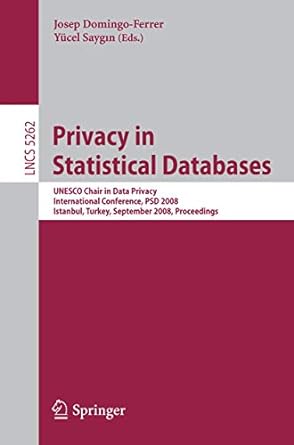Question
Project Guidelines This next section will provide you with the goals, procedures, deliverables, and time estimates expected for each phase of the project. Read each
Project Guidelines This next section will provide you with the goals, procedures, deliverables, and time estimates expected for each phase of the project. Read each of these sections carefully before proceeding to begin on phase 1. Phase 1. Perform Reconnaissance Goal: Build as robust a profile on the target (Artemis) as possible. The profile should include the targets technology stack, email addresses, phone numbers, resumes, and so on. Procedure: Detail the activities you plan to use to obtain as much publicly available information as you can. Deliverable: Provide a minimum two-page description of all the tools and methods you will use to accomplish this task. Deliverable should cover at least 15 tools/resources. Phase 2. Identify Targets and Run Scans Goal: Identify the tools and techniques to be used to perform host discovery and enumeration. Procedure: List out the tools you plan on using to perform network scans, the purpose for using them, and how you will use them. For example: 1. Tool: Nmap. Purpose: Obtain information on hosts and the services and operating systems they are running. Commands: Deliverable: Provide a minimum 2-page description of the tools you plan on using for the network scans, your reasoning for selecting them, and how they will be used. Be sure to include any challenges and potential drawbacks or limitations. Deliverable should cover at least 5 tools/resources. Course content reference: There are two optional labs, Reconnaissance from the WAN and Scanning the Network on the LAN, that may help you with this step. NOTE: Kali is not a tool; it is a Linux distribution or collection of tools, so do not include it in your list Phase 3. Identify Vulnerabilities Goal: Identify the tools and techniques to be used to scan for vulnerabilities. Procedure: List out the tools you plan on using to perform vulnerability scanning and how you will use them. Include both Tenable Nessus and OpenVAS. Remember to include tools designed to look for vulnerabilities within specific technologies or platforms, such as Cisco devices, remote access services, and web applications (e.g., Burp Suite). Follow the same documentation procedure you performed in the previous step. Include screenshots of such tools showing configuration options and settings. Finally, list the pros and cons of each tool. Deliverable: Provide a minimum 2-page description of the tools you plan on using for the vulnerability scans, how you will use them, screenshots of the tools with configuration options and settings, and the pros and cons of each tool. Deliverable should cover at least 5 tools. Phase 4. Threat Assessment Goal: Create a hypothetical threat assessment based on vulnerabilities you expect to find when you perform your actual scans against the clients network. Procedure: Assume the scenarios below are what you are most likely to encounter when you begin your actual work. Scenario 1: Unpatched RDP is exposed to the internet Scenario 2: Web application is vulnerable to SQL Injection Scenario 3: Default password on Cisco admin portal Scenario 4: Apache web server vulnerable to CVE-2019-0211 Scenario 5: Web server is exposing sensitive data Scenario 6: Web application has broken access control Scenario 7: Oracle WebLogic Server vulnerable to CVE-2020-14882
Step by Step Solution
There are 3 Steps involved in it
Step: 1

Get Instant Access to Expert-Tailored Solutions
See step-by-step solutions with expert insights and AI powered tools for academic success
Step: 2

Step: 3

Ace Your Homework with AI
Get the answers you need in no time with our AI-driven, step-by-step assistance
Get Started


